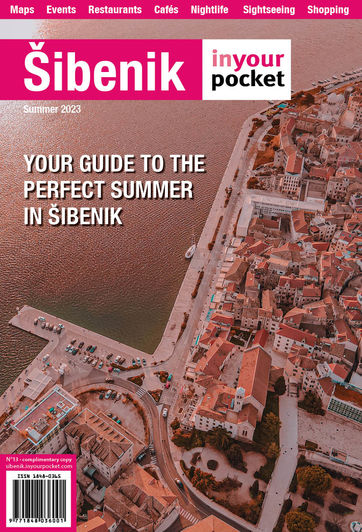Primošten
Primošten’s origins go back to the Ottoman conquest of Bosnia in 1463, when the Croatian-speaking population of the interior increasingly sought refuge on the Adriatic coast. The oval-shaped island known as Gola Glava (“Bare Head”) was one of the places they settled. A wooden bridge was constructed to join the island onto the mainland, and the resulting town became known as Primošten (which might be loosely translated as “the place with a bridge across”). As the Ottoman threat receded, the wooden bridge was replaced by a stone causeway, turning Primošten into the peninsula town that visitors see today.
On the landward side of the causeway is the dainty stone-roofed Chapel of St Rock (1680), beside which is a statue of Don Ivo Šarić (1915-1944), who attempted to protect the local population against atrocities by both Italian and German occupiers during World War II, before finally being murdered by the latter. In front of the statue stretches a typically sweet-smelling Adriatic garden filled with lavender bushes, rosemary, and a clutch of palm trees. Presiding over the causeway to the Old Town is a much-loved piece of sculpture depicting a local fisherman accompanied by wife and donkey. At the opposite end of the causeway, an arched gate leads through a stretch of crenellated wall into the Old Town, where a tangle of narrow streets surround the 15th-century parish church of St George.
Much favoured by Hollywood director Orson Welles (who had a summer villa here), the beaches of Raduča are packed with bathers in summer.
Inland from Primošten
Occupying the high ground uphill from Primošten is an enchanting area of maquis-choked villages and country lanes lined by dry stone walls. Densely planted with olives and vines, this was the agricultural heartland of the region until tourism took off and the working lives of the locals become focused on the coast. All of the villages here have suffered rural depopulation, and once profitable crops have been left to go to seed – although an increasing number of local families are returning to their ancestral properties and revitalizing the olive groves.
The region’s rich stock of traditional stone buildings is increasingly appreciated too, as can be seen from the popularity of the restored Jurlinovi Dvori farmstead in the hillside village of Draga. As well as containing ethnographic displays and an art gallery, Jurlinovi Dvori also offers food and drink, and has become a major tourist attraction as a result. Most of the visitors are pre-booked groups, although individual tourists are welcome to look around as well. The restored farmstead represents the life’s work of local priest Don Stipe Perkov, who was born in the main house and whose family have been masters of the property for several generations. The farmstead consists of a 300-year-old main building where visitors can see traditional textiles, a restored kitchen and an antiquated-looking rakija still. On the opposite side of a terraced garden are several outbuildings that were acquired by the family later, holding a small museum of church silverware and a picture gallery of works donated by contemporary Croatian artists. For more information see Agritourism on page 51.
Primošten Vineyards
The best of Šibenik county’s velvety Babić wine comes from the vineyards ranged across the hills around Primošten, a geometric cluster of small rectangular plots owned by individual local families. With each of these rectangular parcels surrounded by a dry-stone wall, the vine-bearing hillside terraces look strikingly decorative when seen from a distance, and are somewhat appropriately described as the “stone lace of Primošten” in local tourist literature.
These terraces are the result of generations of back-breaking toil: the rocks that cover the local landscape had to be laboriously broken up in order to create cultivable patches of land. Primošten’s oldest vineyards probably date from the 16th century, although extra impetus to their development was provided by post-World-War-II land redistribution, when the area around the Kremik Gulf southwest of town was divided up and shared out among the locals. Over the course of ten years hillside terraces were built, fields were cleared and dividing walls were erected with geometrical precision, producing the unique vineyard landscape that can be seen today. Such is its beauty that the Croatian government is considering putting the Primošten Vineyards forward as a candidate for inclusion on the UNESCO’s World Heritage List.
Best way to admire the vineyards is to head for Kremik yachting marina, which lies at the bottom of several terraced slopes. Several foot- and bicycle paths allow visitors to explore the landscape at close quarters.
Refine your search
Choose Categories
North of Šibenik
Murter
Pirovac
Tribunj
Vodice
South of Šibenik
Primošten
Rogoznica
Inland from Šibenik
Drniš
Knin
Skradin
5 Magical Islands With No Cars
Krapanj
Prvić
Zlarin
Agritourism
Biking
Nature Wonderland
Top Archaeological Sights
Top Sights
Choose Amenities
Credit Cards
Submit




